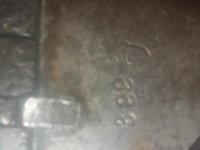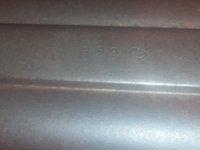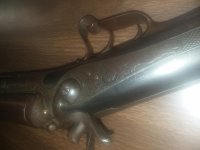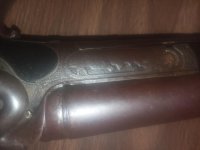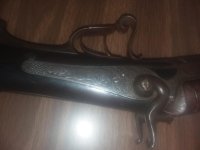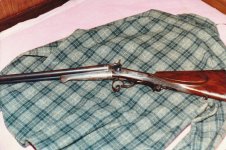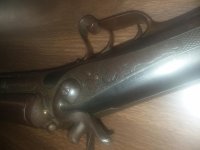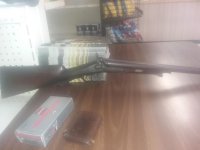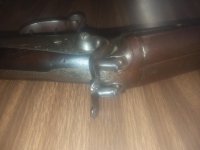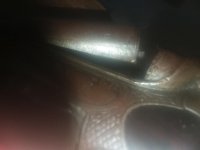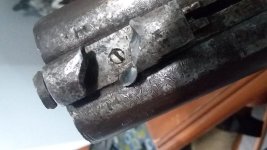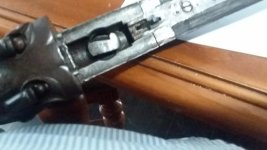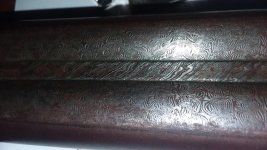ky wonder
US Veteran
today I picked up an estate gun its a 16 gauge under lever, round action, 5 wire Damascus, hammer dbl. brl
straight checkered stock, splinter forearm held on by brass wedge, elaborate trigger guard, {steel, brass, horn}, deep engraving, with 6 relief engraved panels of animals fox, quail, stag, bird dog, hare, and a deer, very elegent receiver, , like none I have ever seen before, with back lock action
gun was a GI bring back from ww1, according to 72 y.o. deceased lady who had put a paper in barrel describing her grandfather's acquisition of said gun while serving in the war
the gun is a true piece of art, still locks up tight, but does have some bore issues due to non cleaning, and black powder usage
the gun was used enough to wear the checkering very thin, some of the animal panels are worn in normal carrying spots.
the gun is only marked in 3 places, no name, serial number 399 over a acorn, on the left barrel, the rib at breach and on the water table, no proof marks so it is not British or Belgium, who has been proofing guns since the 1600s, the Germanic country's , Germany, Austria, Yugoslavia did not start proofing guns until 1892,
I wish I could figure out how to post pics now, but at this time I cant
my hope is that some one here, might have some knowledge on the acorn mark?
if anyone has a interest pm me and I will send photos
thanks
straight checkered stock, splinter forearm held on by brass wedge, elaborate trigger guard, {steel, brass, horn}, deep engraving, with 6 relief engraved panels of animals fox, quail, stag, bird dog, hare, and a deer, very elegent receiver, , like none I have ever seen before, with back lock action
gun was a GI bring back from ww1, according to 72 y.o. deceased lady who had put a paper in barrel describing her grandfather's acquisition of said gun while serving in the war
the gun is a true piece of art, still locks up tight, but does have some bore issues due to non cleaning, and black powder usage
the gun was used enough to wear the checkering very thin, some of the animal panels are worn in normal carrying spots.
the gun is only marked in 3 places, no name, serial number 399 over a acorn, on the left barrel, the rib at breach and on the water table, no proof marks so it is not British or Belgium, who has been proofing guns since the 1600s, the Germanic country's , Germany, Austria, Yugoslavia did not start proofing guns until 1892,
I wish I could figure out how to post pics now, but at this time I cant
my hope is that some one here, might have some knowledge on the acorn mark?
if anyone has a interest pm me and I will send photos
thanks

